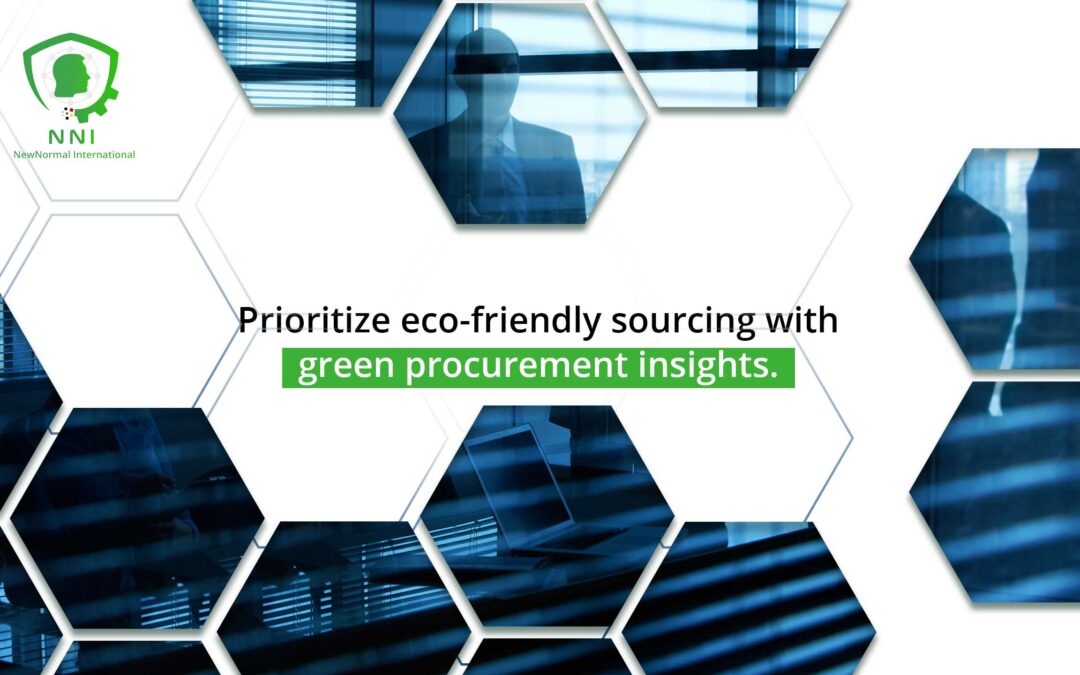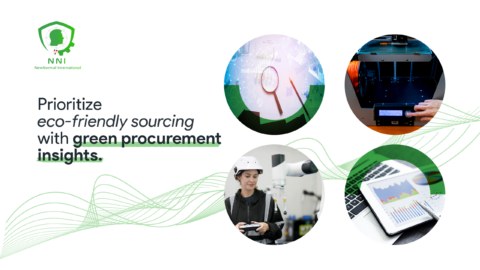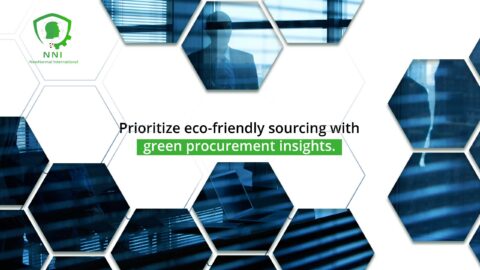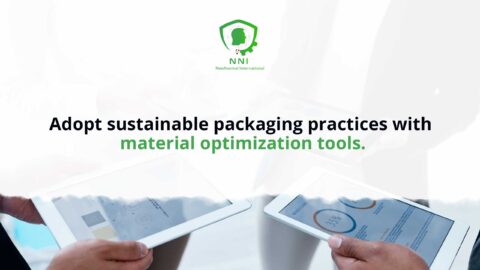Driving Eco-Friendly Change through Green Procurement Insights
In the current business climate, where sustainability is increasingly at the forefront, the ability to prioritize eco-friendly sourcing with green procurement insights has become essential for organizations committed to environmental stewardship. This article explores the strategic importance of green procurement and how it can be effectively integrated into business practices.
The Significance of Green Procurement for Sustainable Business
Green procurement transcends mere carbon footprint reduction. It’s a strategic approach to sourcing goods and services that are environmentally friendly and sustainable throughout their lifecycle, from raw material extraction to end-of-life disposal. This commitment goes beyond simply choosing the “greenest” option; it’s a conscious decision to influence positive change across the entire supply chain and contribute to the growth of a more sustainable future.
By embracing green procurement practices, businesses can:
1. Minimize Environmental Impact: The selection of environmentally conscious suppliers and products directly reduces the organization’s environmental footprint. This includes minimizing greenhouse gas emissions, conserving natural resources, and preventing pollution, contributing to a cleaner and healthier planet.
2. Drive Innovation and Green Market Growth: By demanding sustainable practices from suppliers, businesses encourage them to innovate and develop eco-friendly solutions. This creates a positive feedback loop that promotes the growth of green markets and accelerates the development of sustainable technologies.
3. Enhance Brand Reputation and Consumer Trust: Consumers are increasingly conscious of environmental issues and prioritize brands that demonstrate a commitment to sustainability. Green procurement practices enhance brand reputation and build consumer trust, leading to increased loyalty and competitive advantage.
4. Reduce Operational Costs and Long-Term Risks: Sustainable practices often translate to cost savings through reduced energy consumption, efficient resource utilization, and minimized waste generation. Additionally, green procurement helps mitigate environmental risks and associated liabilities, ensuring long-term sustainability and resilience.
5. Foster Collaboration and Supply Chain Transparency: Green procurement encourages collaboration among suppliers, businesses, and stakeholders to develop sustainable solutions and promote transparency throughout the supply chain. This collaborative approach facilitates knowledge sharing, fosters innovation, and accelerates the transition to a more sustainable future.
6. Optimize Resource Allocation and Achieve Strategic Goals: By aligning procurement practices with sustainability objectives, businesses can optimize resource allocation and achieve their environmental and social goals. This strategic approach ensures that every decision contributes to a more sustainable future and aligns with the organization’s core values.
7. Empower Employees and Foster a Culture of Sustainability: Green procurement goes beyond business operations; it fosters a culture of sustainability within the organization. By engaging employees in sustainable practices and raising awareness about environmental issues, businesses empower their workforce and create a positive impact beyond their immediate operations.
Green procurement is not just a trend; it’s a necessary shift towards a more sustainable future. By embracing this transformative approach, businesses can minimize their environmental impact, drive market innovation, enhance their brand reputation, and achieve their strategic goals. Let green procurement be your guide on a journey towards a more responsible and sustainable future, where environmental consciousness and economic progress go hand-in-hand.
Change Management in Implementing Green Procurement
Adopting green procurement practices requires a comprehensive change management approach. Businesses must assess their current procurement strategies, identify areas for improvement, and implement policies that emphasize environmental considerations in sourcing decisions.
Executive Coaching for Sustainable Leadership
Leadership is crucial in the transition to sustainable procurement practices. Executive coaching can provide business leaders with the tools and knowledge to drive this change, ensuring that sustainable practices are embedded in the company’s culture and operations.
Effective Communication in Sustainable Procurement
Effective communication is key to the successful implementation of green procurement strategies. It’s important to clearly articulate the benefits and goals of eco-friendly sourcing to all stakeholders, including suppliers, employees, and customers.
Leveraging Generative AI for Enhanced Green Procurement
The integration of generative artificial intelligence can significantly enhance green procurement processes. AI can analyze data related to supplier sustainability practices, assess the environmental impact of products, and provide actionable insights for making more eco-friendly choices.
Conclusion
In conclusion, the initiative to “Prioritize eco-friendly sourcing with green procurement insights” represents a vital step towards sustainable business practices. By adopting green procurement, companies not only contribute to environmental preservation but also position themselves as responsible and forward-thinking entities in the global market.
#GreenProcurement, #SustainableBusiness, #EcoFriendlySourcing, #AIinProcurement, #CorporateResponsibility











